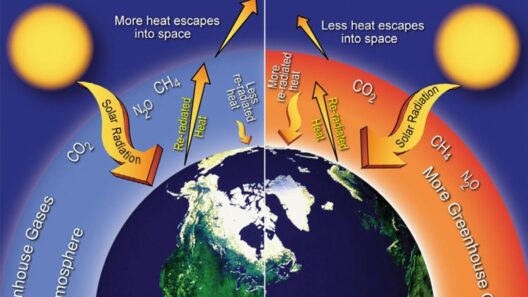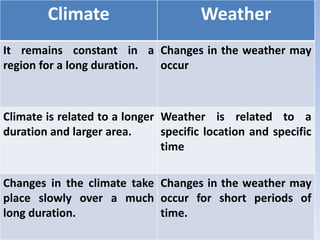South Carolina’s climate is a melange of subtropical humidity and temperate variability, presenting a distinctive character that fuels its historical and cultural landscape. The state experiences a range of weather patterns across the four seasons—spring, summer, fall, and winter—each bringing its own unique charm and appeal. Understanding these seasonal nuances can enhance one’s appreciation for South Carolina’s natural beauty and lifestyle options.
Spring: A Flourishing Awakening
Spring in South Carolina typically explodes with vigor around March and lasts until May. During this period, one can witness a remarkable transformation in the landscape as flora blooms with vibrant colors. Azaleas and dogwoods adorn parks and gardens, creating a picturesque canvas that attracts visitors and locals alike. The average temperature hovers between 60°F to 80°F, although early spring can often present cooler temperatures, particularly in the mountainous regions.
The increased precipitation in spring contributes to the lushness of the scenery. The weather is generally mild, which makes it an ideal time for outdoor activities such as hiking, golfing, or attending the numerous festivals that celebrate local culture. From the breathtaking views along the Blue Ridge Parkway to the charming streets of Charleston, spring is a season that beckons exploration and adventure.
Additionally, spring serves as a pivotal moment for various wildlife species. Migratory birds return, and many species of plants begin their reproductive cycles, all contributing to a rich biodiverse ecosystem. This season is often heralded as a time of renewal, fraught with the exuberance of life re-emerging after winter dormancy.
Summer: The Hottest Time of Year
Summer descends upon South Carolina with unrelenting fervor from June to August. Characterized by high humidity, temperatures often soar into the 90s°F, particularly in the lowcountry region. Coastal areas receive a slight reprieve due to sea breezes, but the oppressive heat can still be felt. Thunderstorms are common during this season, providing brief but intense bursts of rainfall that can lead to localized flooding.
The summer climate invites a plethora of activities that showcase the state’s vibrant culture. Beaches become the epicenters of fun, with Myrtle Beach and Hilton Head Island drawing throngs of tourists eager to bask in the sun or engage in water sports. Local festivals, farmer’s markets, and outdoor concerts thrive during this time, allowing residents to mingle and appreciate the south’s renowned hospitality.
However, it’s imperative to recognize that climate change has begun to influence summer weather patterns, amplifying the frequency and intensity of storms. Coastal flooding and rising temperatures are becoming pressing concerns, emphasizing the need for sustainable practices to mitigate environmental impacts.
Fall: A Bounty of Color
As summer fades into fall, South Carolina experiences a dramatic and picturesque transformation. From September to November, the air grows crisper and the foliage bursts into a kaleidoscope of reds, oranges, and yellows. This metamorphosis heralds one of the most aesthetically pleasing seasons of the year. Average temperatures fall, typically ranging from the mid-70s°F to the upper-80s°F at the beginning of the season, dropping further as winter approaches.
Fall is synonymous with harvest festivals, pumpkin patches, and woodsy escapades. The scent of apple cider fills the air, and university football games become social staples. The temperate climate allows for extensive outdoor activities, such as hiking in the Smoky Mountains, where visitors can witness the stunning fall foliage firsthand. The cultural landscape shines brightly during this season, accentuating the historical significance of the state’s plantations and homes as they celebrate the harvest.
Moreover, South Carolina’s fall season is an evocative time for reflection. The beauty of the landscape serves as a reminder of nature’s cycles, encouraging the community to engage in discussions about conservation efforts and climate change, especially considering the implications of changing seasons on local agriculture.
Winter: A Season of Respite
Winter, running from December to February, in South Carolina is a stark but mild affair compared to other regions of the country. The coastal areas enjoy relatively warm temperatures, averaging between 40°F and 60°F, while the mountainous regions exhibit more pronounced cold, with the rare chance of snow. Despite its reputation for mildness, winter can be unpredictable, with occasional cold snaps and frosty nights providing a stark contrast to the generally temperate climate.
This season embodies a quieter charm, allowing for reflective solitude amidst the stillness of nature. Holiday festivities abound, with communities embracing traditions that celebrate the season. Local favorite activities include holiday parades, light festivals, and the unmissable South Carolina State Fair.
Winter is also a critical time for wildlife in South Carolina. Many birds migrate south for warmth, while other species enter hibernation. The lack of foliage creates a serene landscape, making it an excellent period for wildlife observation. The cooler air can bring clarity to the views of natural wonders, prompting individuals to appreciate the quieter, graceful elements of South Carolina’s environment.
Conclusion: Embracing South Carolina’s Seasoned Charms
South Carolina’s climate is an intricate tapestry of seasonal variation, each bringing its own distinctive flavor. From the vibrant, blossoming landscapes of spring to the humid, bustling beaches of summer, the bountiful harvests of fall, and the reflective stillness of winter—each season offers unique experiences and opportunities. Understanding these climatic patterns not only enriches our appreciation for the natural beauty but also compels us to engage in discussions surrounding environmental stewardship. By recognizing the inherent value of South Carolina’s seasons, we cultivate a deeper connection to this beautifully diverse state and commit to preserving its charm for generations to come.








